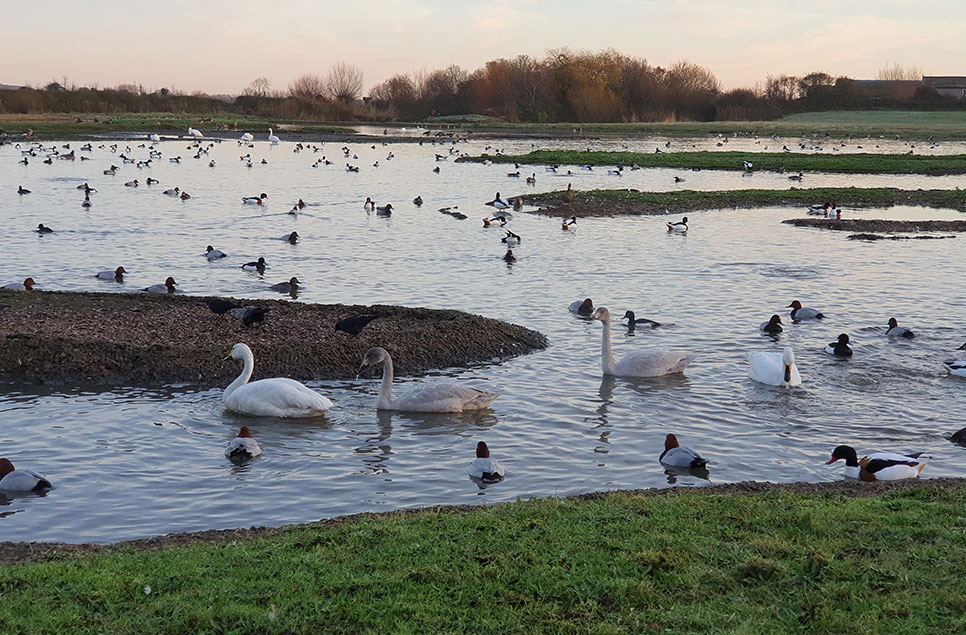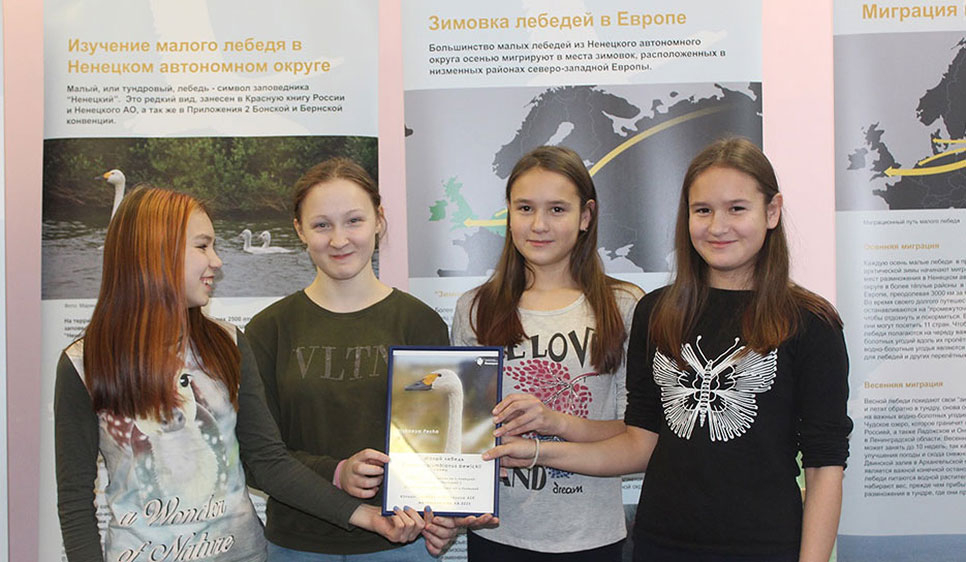Wintering sites start filling up
Wintering sites across Europe have been filling up over the last few days as the swans continue to make progress with their migration. Over 800 birds have now arrived at Lake Markiezaat in the south of Holland and 489 birds are happily feeding on the Northeastern part of Lake Ijsselmeer, a shallow lake in central Holland (Wim Tijsen). A co-ordinated count across the Ouse Washes in Norfolk yesterday, revealed that 198 Bewick's swans had arrived in the area (WeBS), which is close to the average number recorded there at this time of year for the past five years (210 birds). The Ouse Washes is the single most important site for the species in the wintering range, hosting up to 4,000 birds each winter.
The arrival of the swans has triggered the usual flurry of sightings of ringed birds from enthusiasts across the continent! Dima Boiko and Julius Morkunas have sent news from their trip around western Latvia during which they saw 1,000 Bewick's!
(Mixed Bewick's and Whooper flock, Latvia.)
Whilst scanning the flocks, their attention was diverted to a swan with very yellow legs! This pigment deficiency is known as leucism and is thought to be genetically determined. The bird was ringed 22Z and was first caught in Russia by WWT and colleagues in 2005.

Eastern Europe provides key staging sites for the swans, enabling them to replenish their nutrient reserves before continuing their onwards journey. The limited ability of large birds to carry the body fat needed to fuel flight, combined with the high energy cost of flying, means that the Bewick's swans need to refuel after around 1,200 miles of flying.



